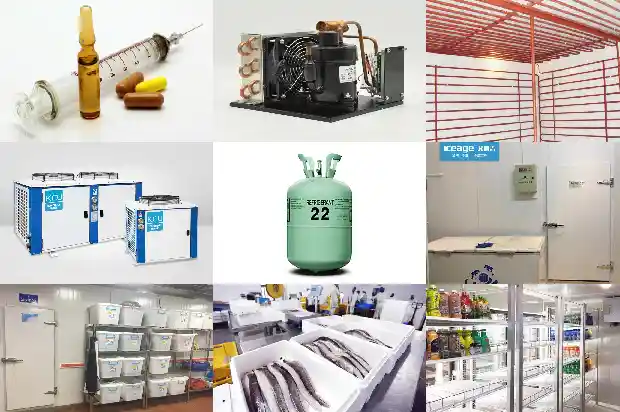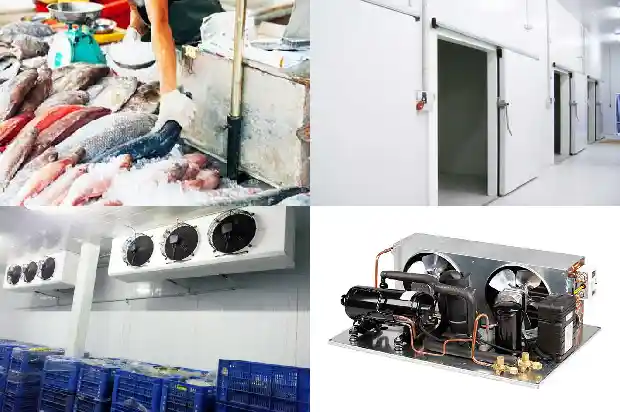Instructions for Welding and Drainage in the Installation of Refrigeration Equipment Pipelines
2025-02-17
- The suction pipeline should slope towards the compressor at a rate of 3/1000.
- The discharge pipeline should slope towards the condenser at a rate of 2/1000.
- The unit should be placed as close as possible to the evaporator (such as display cabinets or cold storages).
- When the unit is located higher than the evaporator (for example, the unit is placed on the 2nd floor and the display cabinet is on the 1st floor), an oil - return bend should be installed at the joint of the horizontal suction pipe of the evaporator and the rising vertical pipe. If the unit is significantly higher than the evaporator, an additional oil - holding bend should be installed every 6 - meter rising section.
- If the unit is located lower than the evaporator (for example, the unit is placed on the 1st floor and the display cabinet is on the 2nd floor), the oil - holding bend at the bottom of the rising section should make the suction pipe rise to the same level as the upper surface of the evaporator, and then the pipe should run towards the unit.
- If the condenser is located higher than the compressor unit, for every 6 - meter height difference between the condenser and the compressor unit, an oil - return bend should be added to the rising section of the discharge pipe.
In addition, in a system where there is no structural valve with a one - way check oil - return bend in the discharge part, the discharge rising pipe should be raised above the coil horizontal plane of the air - cooled condenser and then connected to the condenser.
- When the vertical suction pipe is 60 cm - 120 cm, an oil - return bend should be installed at the bottom of the vertical pipe.
When the vertical suction pipe is 120 cm - 4.8 m, oil - return bends should be installed at both the bottom and the top of the vertical pipe. - When the length exceeds 6 meters, oil - return bends should be installed at the bottom and the top of the vertical pipe, and an oil - return bend should be installed in the middle of the pipe.
When there is a long discharge pipe in the vertical direction (when the height difference between the compressor and the condenser is large), considering the oil - return problem, a bend should be installed every 10 meters.
- Copper pipe support and suspension: Refer to the figure for the support method.
- Refrigeration pipeline insulation:
For low - temperature units, the suction pipeline from the evaporator to the parallel units should be wrapped with closed - cell insulation material with a thickness of ≥ 19.1 mm. For medium - temperature units, the suction pipeline from the evaporator to the parallel units should be wrapped with insulation material with a thickness of ≥ 12.7 mm. For long liquid pipes exposed to high - temperature environments, insulation should be carried out using insulation material with a thickness of ≥ 12.7 mm. - Copper pipe welding:
During the entire welding process, nitrogen - blowing welding is required to avoid the generation of oxides in the pipeline. The nitrogen flow rate is 0.05 m³/h or the pressure should be ≤ 0.2 kg/cm² using a pressure - reducing valve. During welding, valves such as ball valves, needle valves, and solenoid valves near the weld joint should be protected to prevent valve failure caused by high temperatures. - Drainage project:
Install a return bend on the machine. Incline the piping at a slope of about 1/50 or more towards the drainage outlet. All connection points must be bonded with sewer glue, and the glue should be applied evenly. Install a water - seal bend before connecting the drain pipe to the main condensate drain pipe. When using a drainage hose for connection, leave a 50 - mm allowance per meter. Install anti - condensation measures for the drainage pipeline of the low - temperature system.
Related Articles
- Welding Equipment Used in Refrigeration System Maintenance
- Multi-split air conditioner: Nitrogen charging for welding, pressure maintaining, vacuuming and refrigerant charging
- Experience Sharing on Refrigeration Welding Operations
- Oxyacetylene Welding Operation Method for Refrigeration Pipes
- Drainage of Refrigeration System Piping
- What is the Correct Operation Method of the Distribution Box during Cold Storage Installation?
- What Issues Should Be Noted in Cold Storage Installation and Construction?
- What Special Requirements are There for the Installation of Tea Cold Storage?
- Operating Principle and Standard Installation Steps of Multi - split Systems in Refrigerant Air - conditioning Systems
- How to Identify the Quality of Refrigeration Equipment Installation Materials?
- How to Identify Installation Materials for Refrigeration Equipment
- Knowledge, Installation and Maintenance of Cold Storage Systems
- Precautions for the Installation and Use of Water Flow Switches
- What safety measures should be paid attention to during the installation of cold storage?
- What are the precooling methods after the installation of cold storage?
- Selection and Installation of Thermal Expansion Valves
- Return Bend Setup and Installation Technical Requirements
- Daily Maintenance Training for Users after Installation of Small and Medium-Sized Cold Storages
